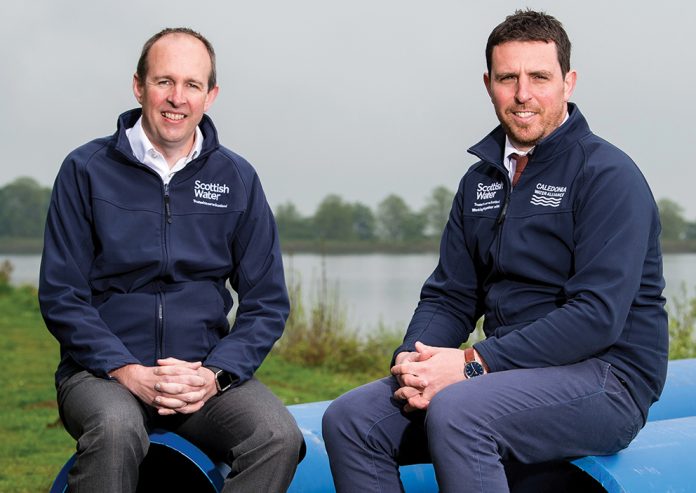Scottish Water is to improve services to more than 54,000 people in parts of the Bearsden, Milngavie, Clydebank and Strathblane areas.
The utility will do so by changing the source of their water supply from Burncrooks Water Treatment Works (WTW) in west Stirlingshire to Milngavie WTW in East Dunbartonshire.
A £30 million project will involve the installation of about 8 miles (13km) of new water main, the transfer of supply from Burncrooks WTW to Milngavie WTW and the decommissioning of Burncrooks WTW.
Burncrooks WTW in the Kilpatrick Hills near Strathblane, which was built in the late 1950s, has served the area well but is reaching the end of its working life and is not suitable in the long-term to meet stringent water quality standards.
Milngavie WTW, which was opened in 2007, is a state-of-the art WTW which already serves about 700,0000 across much of the Greater Glasgow area.
The investment in Scottish Water’s infrastructure will ensure customers in the north of Bearsden, parts of the west of Milngavie on higher elevations such as Mains Estate, Barloch, and Clober, parts of Strathblane and Blanefield, Faifley, and a large part of Clydebank (apart from areas such as Kilbowie, Whitecrook and Mountblow which are already served from Milngavie and Blairlinnans WTWs), receive the highest quality drinking water for many years to come.
The investment will also enable Scottish Water to supply customers with water from more than one WTW, Milngavie or Balmore WTW near Torrance, and that increased connectivity will provide improved resilience and reduce the risk of disruption to normal water supplies.
The work will be carried out for Scottish Water by its alliance partners Caledonia Water Alliance (CWA) and is expected to be completed in about two years.
The main 4.3 miles (7km) section of new plastic twin-pipe water main, which will be 560 milimetres in diameter, will be installed from Bankell Service Reservoir in the east (near Strathblane Road, A81) to Baljaffray Service Reservoir in the west, following a route up part of Strathblane Road, west along the north of Craigmaddie Reservoir, round the north and west of Mugdock Reservoir, down Mugdock Road to Drumclog Car Park.
It will continue across the south of Mugdock Country Park following existing footpaths, crossing the West Highland Way near a footbridge over the Allander Water near the industrial estate (Clober), crossing the A809 just south of Craigton village, north west of Mains Plantation to Baljaffray Service Reservoir.
The total of 8 miles of water main will also include a second stretch of 3.5 miles (or 6km) of 250ml pipe to be installed from near Baljaffray to Carbeth, where it will connect to the existing network.
This new main, which will also be plastic, will replace an existing stretch of old 21 inchmain which has a history of bursts. So, in addition to connecting customers to the Milngavie WTW network, this new main will provide improved security of supply.
More than 80% of the pipe route will be installed on private land, rather than under public roads and footpaths) in order to reduce inconvenience for the public.
Paul Sexton, Scottish Water’s alliance management general manager, said: “We are delighted to be starting this important project which will benefit more than 54,000 customers for many years to come.
“Switching supply from the ageing Burncrooks Water Treatment Works to the state-of-the-art Milngavie WTW will enable us to continue providing high-quality water to thousands of domestic properties and businesses and a large number of public buildings including more than 30 schools in three local authority areas and hospitals such as the Golden Jubilee in Clydebank.”
Roseanna Cunningham, Cabinet Secretary for Environment, Climate Change and Land Reform, said: “I welcome Scottish Water’s announcement of £30 million investment into the drinking water infrastructure for parts of the Bearsden, Milngavie, Clydebank and Strathblane areas, which will secure a high-quality water supply into the future. Importantly, the installation of new pipes will also improve the resilience of the network and security of supply so this is great news for the tens of thousands of customers in these areas.”
The pipes will be installed by CWA using mainly the open cut method of excavation.
Several other alternative routes for the pipe were considered, including through more built-up areas of Milngavie and Bearsden, but this route was selected for a number of reasons, including minimising disruption.
We will construct a pumping station at Bankell to pump the water along the new water mains and planning permission for this was granted by East Dunbartonshire Council.



